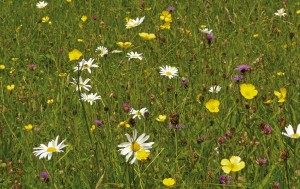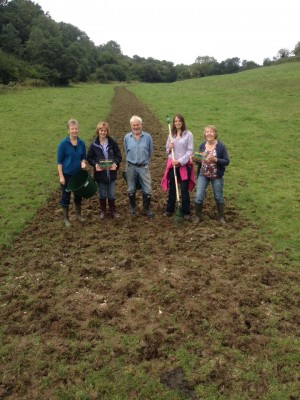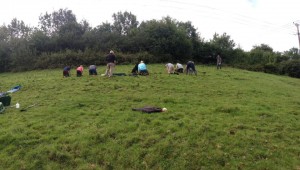Wildflower meadow planting
Meadows and grasslands were once an intrinsic part of British agriculture, bursting with colour and the hum of insects, but it has now been estimated that these important habitats have declined by over 97% since the 1930s, largely to our agricultural practices. Traditional farming practices would have had a mixture of different crops, permanent pasture land and meadows for hay that were cut and stored to feed the livestock over winter. Management followed an annual cycle of growing in spring and summer, cutting in late summer and grazing in winter. But the turning point came during the Second World War when six million acres of grassland were ploughed to grow cereals, starting the inevitable decline.
It is this decline that continues today as monoculture rises to keep up with food demand. Meadows are crucial habitats, supporting a myriad of insects from bees and beetles to grasshoppers and butterflies, which in turn support many small animals and birds. A meadow can contain up to 40 species per square metre – a diversity that few habitats in Britain can match. As well as supporting pollinating insects that are valuable for many food crops they help mitigate flooding by holding on to rain water and capture vast amounts of carbon. It is this worrying predicament that has driven BART to add to our river restoration works by incorporating wildflower meadow planting into appropriate project sites. Our SHRIMP Project site (you can find out more about this project here) was an excellent pilot for these works for a number of reasons, the main three being a lack of nutrient (fertilizer) input onto the field for several years (wildflowers thrive in low nutrient soils where they are not out-competed by grasses), evidence of wildflowers already establishing in certain areas and finally thoroughly helpful and supportive farmers (a huge thank you to the Smiths!). So, with the help of 2 teams of fantastic local volunteers we set off this weekend to plant over 400 metre squared of wildflower meadow – a mixture of seeds and plugs. It will be extremely interesting to watch these meadows develop over time and we already have a number of expert (and expert in training) volunteers who are on hand in the area to monitor plant life on site. Hopefully the start of lots more similar work into the future!
If you are interested in planting your own wildflower meadow, check out Plantlife and their great work with their ‘Save our Magnificent Meadows’ project for advice. Anyone can do it!
Thank you to our fantastic botanist volunteers, Plantlife and the Wildlife Trust for the advice, to the farmer for making this possible, to everyone who helped volunteer, and last but not least the local community and People’s Postcode Trust for funding these wildflowers.









